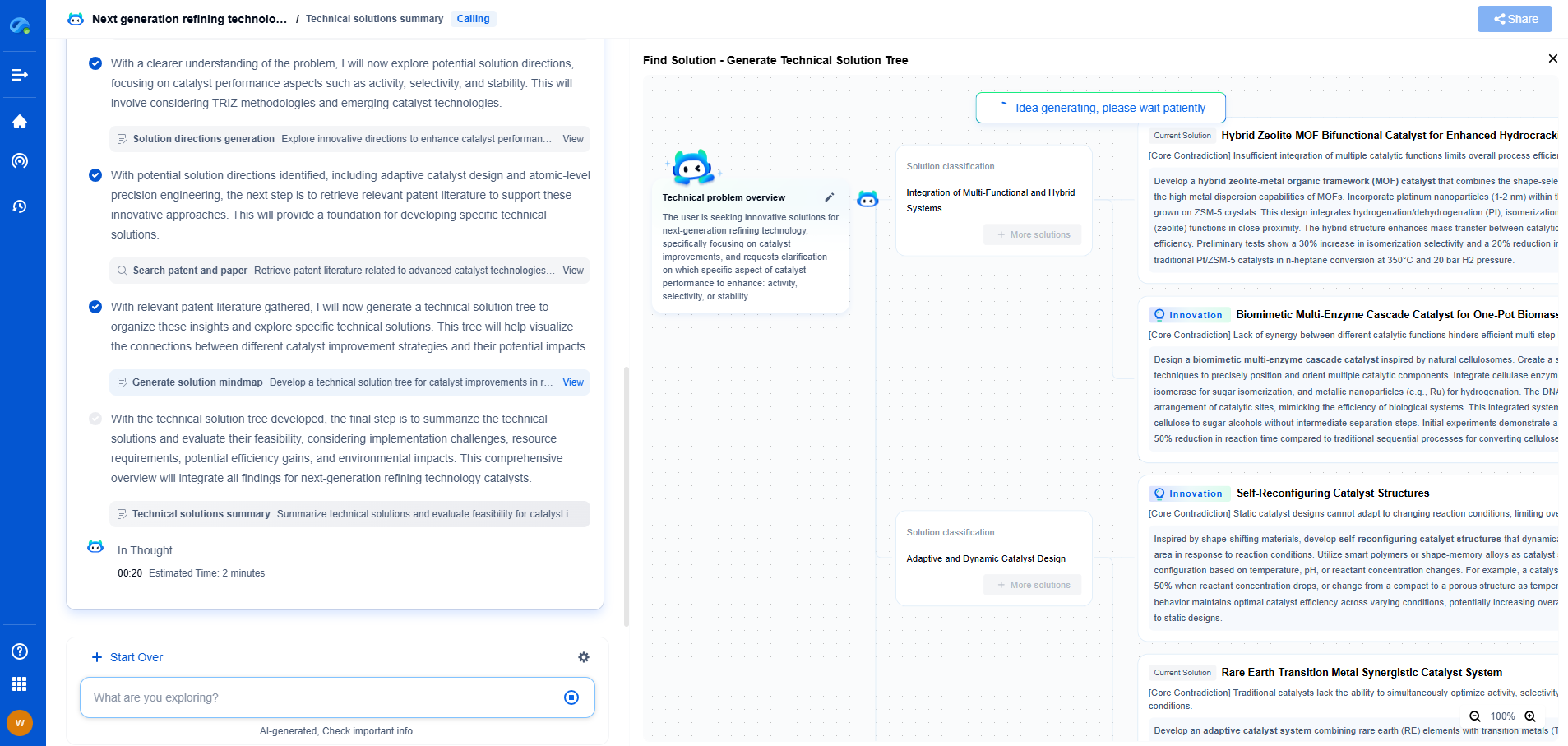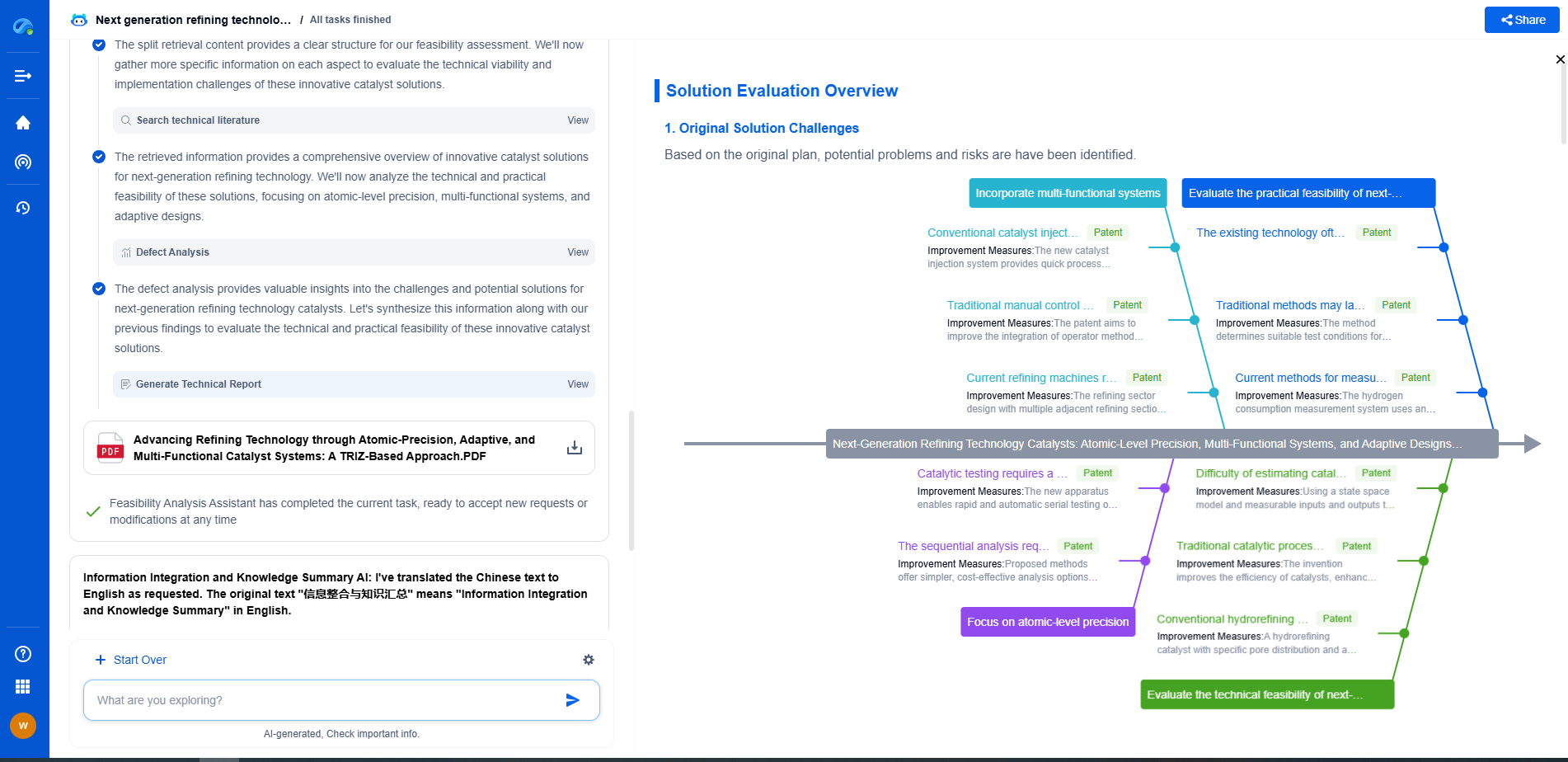What Is Hysteresis Error in Measurement and How to Minimize It?
JUL 17, 2025 |
In the realm of measurement and instrumentation, precision is key. One critical factor that can skew measurements is hysteresis error. Hysteresis refers to the lag between the input and output of a system, often resulting in an error in measurement processes. Understanding hysteresis error is crucial for those working in fields that demand high precision, such as engineering, physics, and quality control. This article delves into the concept of hysteresis error, its causes, and its implications on measurement accuracy.
What is Hysteresis Error?
Hysteresis error occurs when a system's output lags behind changes made to its input. In simpler terms, it is the difference in the measurement results when the same input is approached from different directions. For example, if you measure the same temperature by increasing and then decreasing it, the readings may not perfectly coincide. The discrepancy is due to hysteresis.
This error is primarily associated with materials and systems that have memory effects, meaning they retain some information about past states. This retention can be due to factors like material properties, internal friction, or energy losses in the system.
Causes of Hysteresis Error
Several factors contribute to hysteresis error in measurement systems:
1. Material Properties: Certain materials inherently exhibit hysteresis due to their elastic, magnetic, or thermal properties. For instance, rubber bands and magnetic materials often display hysteresis.
2. Mechanical Play: Mechanical systems with loose components or play can introduce hysteresis, as the components may not return to the exact position after deformation.
3. Internal Friction: Friction within the system can resist movement, causing a delay in returning to the original state after a load is applied or removed.
4. Energy Loss: Systems that lose energy during the measurement process, such as through heat dissipation, may exhibit hysteresis error.
The Impact of Hysteresis Error on Measurements
Hysteresis error can significantly affect the accuracy and reliability of measurement systems. In precision-based industries, even small errors can lead to faulty products, safety concerns, and increased costs. For example, in the aerospace industry, precise measurements are vital for ensuring the safety and performance of aircraft components. Hysteresis error in sensors or measuring devices can result in incorrect data, leading to potential failures.
Minimizing Hysteresis Error
While hysteresis error cannot always be eliminated entirely, several strategies can help minimize its impact:
1. Material Selection: Choose materials with minimal hysteresis properties for critical components. For instance, certain alloys and ceramics are known to exhibit low hysteresis.
2. Calibration: Regular calibration of instruments can help identify and correct hysteresis errors. Calibration ensures that the measurement system is accurately reflecting the true value.
3. Design Optimization: Designing systems with tighter tolerances and reduced play in mechanical components can help minimize hysteresis. Reducing frictional forces and energy losses during operation is also beneficial.
4. Compensation Techniques: Implementing compensation algorithms in digital measurement systems can correct hysteresis errors by adjusting the output based on known characteristics.
5. Temperature Control: Since temperature variations can exacerbate hysteresis, maintaining a stable operating temperature can help reduce its effects.
Conclusion
Understanding hysteresis error and its implications is essential for maintaining the integrity of measurement systems. By recognizing its causes and employing strategies to minimize its impact, industries can enhance the accuracy and reliability of their measurements. In a world where precision is paramount, addressing hysteresis error is a vital step towards achieving optimal performance and quality in various applications.
Whether you’re developing multifunctional DAQ platforms, programmable calibration benches, or integrated sensor measurement suites, the ability to track emerging patents, understand competitor strategies, and uncover untapped technology spaces is critical.
Patsnap Eureka, our intelligent AI assistant built for R&D professionals in high-tech sectors, empowers you with real-time expert-level analysis, technology roadmap exploration, and strategic mapping of core patents—all within a seamless, user-friendly interface.
🧪 Let Eureka be your digital research assistant—streamlining your technical search across disciplines and giving you the clarity to lead confidently. Experience it today.
- R&D
- Intellectual Property
- Life Sciences
- Materials
- Tech Scout
- Unparalleled Data Quality
- Higher Quality Content
- 60% Fewer Hallucinations
Browse by: Latest US Patents, China's latest patents, Technical Efficacy Thesaurus, Application Domain, Technology Topic, Popular Technical Reports.
© 2025 PatSnap. All rights reserved.Legal|Privacy policy|Modern Slavery Act Transparency Statement|Sitemap|About US| Contact US: help@patsnap.com

